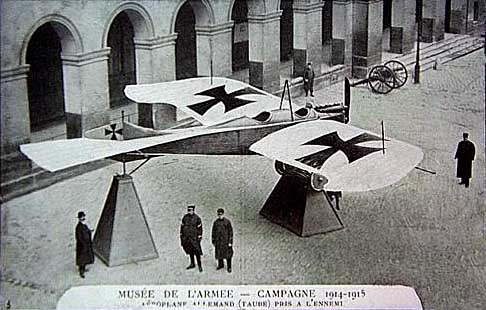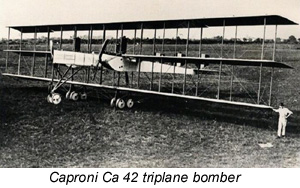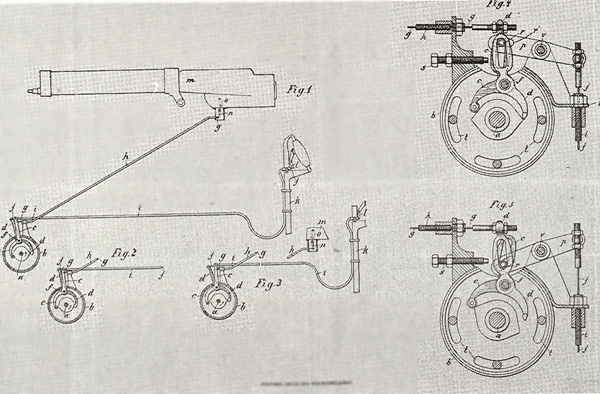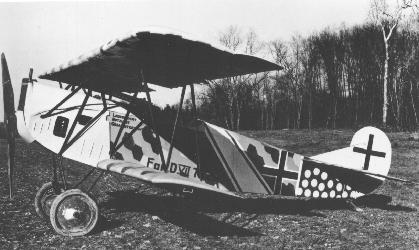
|
The Great War in the Air by Raul Colon |
||
|---|---|---|---|
| Home Page | Articles Index | ||

|
A captured Rumpler Taube displayed at the Army Museum at Les Invalides, Paris. | ||
|
By the outbreak of hostilities in the Great War, all combatants had an air service in one form or another. The Germans for example, despite their main interest in big airships, had at the outset of war, some two hundred and fifty airplanes. Their organization and basic setup were generally superior than that of the Allies. The Austro-Hungarian Empire also developed an air force service—it was small in comparison to the other players in the war, but one major contribution to the cause of the Central Powers in those early years was the Taube or "Dove"—the main German reconnaissance airplane in the early months of the conflict, was an Austrian design.
The Germans outnumbered the French in the air nearly three to two—the French command structure was less efficient, but in other areas, such as quality, their aircraft were superior to that of the Germans. Moreover, the French had the largest aircraft manufacturing industry base in the world, and were able to increase production once the war started in 1914. This was unfortunate for Britain, which lagged behind both the French and Germans. The Royal Flying Corps was founded in 1912, two years after the French equivalent, and deployed some sixty aircraft at the Western Front in August 1914. For the first two years of the war, the British were heavily dependant on French engines and airframes. However, Britain had a much greater industrial base, and by the end of the war, Britain’s aviation industry was leading the world in both design and production of airplanes. |
 |
The Russians had more aircraft than the British, and had produced the four-engine Sikorsky Ilay Murometz, the world’s first truly heavy bomber in early spring 1915. But the confusing variety of the Russian airplanes created maintenance difficulties. This same problem affected the French, but they were quick to realize the importance of standardization. The other major player in the Great War, Italy, despite their inept airforce organizational structure (Italy was the first nation to actually carry out aerial bombing when they bombed the Turks in North Africa in 1911) |
| produced some of the finest aviators of the conflict and at least one outstanding designer, Gianni Caproni, whose medium and heavy bombers played a significant role in the upcoming campaign at Isonzo.His monster creation, the three engine, triplane bomber, the Ca 42, made it into the skies in early 1918. But still, for all of the parties involved in the war, reconnaissance, in all its aspects including artillery spotting, was the most important task assigned to the aircraft throughout the war. |  |
|
The British Army High Command failed to anticipate that successful strategies would breed counter-tactics. Since the reconnaissance missions enjoyed such successful rates, the enemy took steps to prevent it, while at the same time, protecting its own reconnaissance missions. It did not take them long to realize that if you can see the enemy, you can hit the enemy, and so surveillance expanded into attack. Pursuit, fighter, bomber and ground attack airplanes were inevitable developments of counter-tactics.
In spite of the prewar year’s dominance of the monoplanes, the vast majority of the aircraft that participated in the Great War were biplanes, which were structurally more stable and robust. Reconnaissance aircraft were generally two seaters and the spotter or observer was often senior to the pilot. Speed was not an important consideration in those early years, the main danger to these aircraft, apart from the occasional light ground fire, was engine trouble, which was very common with the early airplanes. In a sign of the times, in most of the early aerial combat, pilots saluted their counterparts before exchanging small gun fire with them. There was always respect and admiration between opposing aircrews. Mobile aerial reconnaissance rapidly proved its worth. As early as August 1914, British reconnaissance aircraft gave notice to headquarters of the German army outflanking movement at Mons, and German Taubes warned of the upcoming Russian advance at Tennenberg, enabling the outnumbered Germans to strengthen their armies at the vital point to gain a sensational victory in the upcoming battle. Airborne French spotter aircraft noted the huge gap between the advancing German First and Second armies on the Marne, September 3rd, 1914, prompting the successful Allied counterattack. The usefulness of aerial reconnaissance to the artillery forces, especially in correcting the gunner range and point of fire, proved to be a success at the outset of the long trench warfare, on the Aisne in mid September. The potential of reconnaissance airplanes only increased as army commanders involved in the war received raw data from the squadrons. Two-way radio and effective automatic camera systems were introduced in the spring of 1915. |

| ||
|---|---|---|
|
By late 1915, the ever increasing need to deny the enemy of reconnaissance information and artillery spotting, had expanded the role of the air forces involved in the war. No longer "above the battlefield", aircraft became participants in the war. The first fighters were of existing aircraft armed with a machine guns. But enemy attack aircraft, as opposed to observation balloons, required different qualities—in particularly speed and maneuverability and superior power to weigh ratio of French rotary engines, which gave them the initial advantage.
Another need that surfaced during those early days was that of a forward firing machine gun system that did not hit the front propeller. Various solutions were tried, with a pusher airplane, the engine propellers were mounted behind the airframe, but this so called solution entailed a major loss in airplane performance. Also, an engine behind the pilot proved deadly in a crash, when the engine broke loose and flew forward, crushing the pilot. |
 |
| The patent recording Fokker's invention of 1915: the synchronized machine gun. This patent was challenged by Swiss-born Franz Schneider, who had patented a similar invention in July 1913. Schneider's invention was based on the blocking of the machine gun when a propeller blade was in front of the barrel. At 1,200 revolutions the machinegun was blocked 2,400 times per minute. The gun, therefore, with its capacity of 600 rounds per minute, was unable to get off a single round. Fokker's device was worked by a camshaft and lever, which fired the machine gun the moment that there was no blade in front of the barrel.
|
| French designer Raymond Saulnier, and Swiss-born Franz Schneider, both devised an interrupter gear that enabled a forward firing gun to fire through the propeller. French aviator, Roland Garros, also devised a method of a forward firing gun in which he added metal plates to deflect bullets striking the propeller blades. Although Garros's method lacked finesse, amazingly it worked fairly well. However, Garros's idea was short lived, as he was shot down and his plane was captured intact by the Germans. The mechanism was passed to the Fokker company workshops, where an improved gearing system was devised that gave the Germans a market superiority for the first time. The so called "Fokker Scourge" was partly neutralized by the adoption of the flying formation, (disliked at first by the individualistic French pilots) with the creation of elite squadron units, such as the Les Cigognes and by adopting only one type of aircraft, rather than grouping different models, into individual squadrons. Air supremacy was achieved by superior Allied fighters like the British FE 2 series airplanes, the best of the pusher aircraft concepts, the new generation of Nieuports and later in the war, the tough and speedy Spad VII with its synchronized machine guns. |
 |
SPAD VII |
|
Tactics were also further developed largely on the wing by gifted pilots. Solo fighters soon learned of the advantage of attacking from above and behind, preferably out of the sun. When aircraft operated in pairs, one of them would approach from the side and open fire early to cause a distraction, while his partner dove on the adversary and attacked from the rear.
Some maneuvers were associated with a particular pilot, such as the Max Immelman. The "Immelman" forced the attacking airplane to dive past the lead plane, by the lead plane pulling up into a near vertical climb, then turning sharply by kicking the rudder and then diving behind the attacking plane— it was not a tactic for the faint hearted. Immelmann’s fellow ace, Oswald Boelcke was even more influential. He was an early advocate of the fourteenth aircraft Jasta or hunter squadron, which he first commanded a Jasta in the fall of 1916. Among its early protégés was Manfred von Richthofen, the most recognized ace of World War I and maybe of all time. The brave and skillful fighter pilot rapidly became a folk hero back home, a knight in the air as he was called by the western media. His daring aerial exploits offered a welcome contrast to the anonymous industrial massacres going on the trenches below, in the smoke and mud of Verdun and the Somme. By mid 1916, aircrews were absurdly overworked, required to fly several missions each day, for weeks and months on end. Allied pilots were pitched into the aerial battles, under-trained and with inexperienced pilots. Eighty percent of British air casualties had flown less than twenty missions. The Germans were more careful in their use of aircraft and its crew, that is, until heavy losses force them to sacrifice their standards. They were also better disciplined than their Allied counterparts. The German Albatross biplanes regained air fighter superiority for the Germans in late 1916 and retained it beyond "Bloody April" in 1917, when the life expectancy of a British fighter at the front was a just eleven days. The Allies were able to get control of the skies above Europe later in the fall of 1917, partly due to attrition at the battle field, plus the possible introduction of American forces in Europe. French and British airplane production in late 1917 doubled that of the Germans. Germany compensated by moving quickly, to where needed, their Jagdgeschwader or "Flying Circus" formations, made up of several squadrons, backed by extensive ground support and transport. Germany's fear of the US entry into the war, did not materialize until 1918, but American flyers had already enlisted with the Allied air forces in great numbers since early 1917. They began flying with both British and French squadrons close to the front. In April 1917, the United State Army Air Force, then only a division of the Army Signal Corps, consisted of about a thousand officers and men and two hundred aircraft—none fit to fight in the skies of Europe. US squadrons activated in 1918, generally flew French model aircraft. The model, that was probably the best fighter aircraft of the war, was the steel framed, 125 mph Fokker DVII, which appeared in the air when the war was already lost to the Allies. Bereft of vital materials, the Germans were hugely outnumber by the Allie’s newer SE5As, Sopwith Camels and SPADs. |
 |
Fokker DVII |
|
Although fighters became the dominant aircraft of the Great War, the only important role for the airplane foreseen by the warring parties in 1914 was that of reconnaissance and bombing. Strategic bombing never became really effective in the war years, but its future potential was well established then. The ineffectiveness of the early "bomber" made the German faith in the big airships, the Zeppelins, understandable. For reasons of safety, Zeppelins only flew at nigh and maintained full radio blackout, which made for a very difficult navigation, and inaccurate bombing of major British and French cities. Secrecy was essential to their missions, but even before they were spotted by search lights, they were frequently heard miles away. They conducted raids on Paris as well as other cities in the French country side, but their most important target was London. However, they were becoming increasingly vulnerable to enemy aircraft as well as ground fire and were removed from front line service after five units were shot down over London in September 1916.
Specialized ground attack aircraft were a late development. The Germans employed specialized formations of two-seater planes in large numbers, called Schlastas or "Battle Flights." They had a devastating effect at the Battle of Cambrai in November 1917 and in the first German’s army offensives of 1918, dropping bombs, strafing enemy columns with machine gun fire and at the same time, providing the army with information regarding the battle. By 1918, air power was beginning to play an important role especially on the Western Front, where over 8,000 aircraft were in action at one time or another, and the size of the units were massively increased. The French, for instance, operated an airplane division of some seven hundred aircraft of different types. With the development of the attack aircraft, ground troops found themselves in an ever increasingly dangerous environment. The Germans often dispatched thirty aircraft raids against targets behind enemy lines. The war was ultimately decided by events on the ground, but by 1918 events on the ground were dramatically affected by events in the skies. In proportion of the numbers engaged, casualties’ rates were very high. The rate among 22,000 British flyers was well over fifty percent, and German and French rates were equally similar. More pilots were lost to accidents than in battle. Fewer might have died if parachutes had been issued—they were provided to balloons observers, but were considered impractical in aircraft, because they were too heavy. The Germans introduced parachutes toward the end of the war, but the Royal Flying Corps command feared that parachutes would encourage aircrews to abandon their aircraft unnecessarily. The sight of an unarmed pilot jumping to his death rather than burn in his flaming airplane was not easily forgotten. The author Paul Colon is a freelance writer who resides in San Juan Puerto Rico. rcolonfrias@yahoo.com |
Return To Articles Index.
© The Aviation History On-Line Museum.
All rights reserved.
July 16,2007.